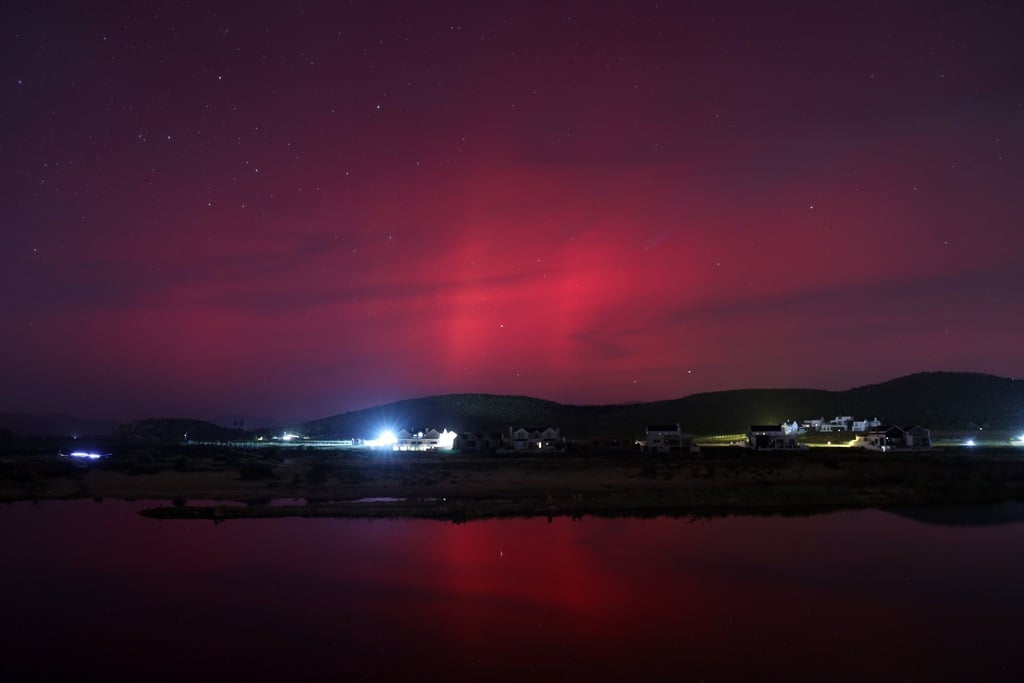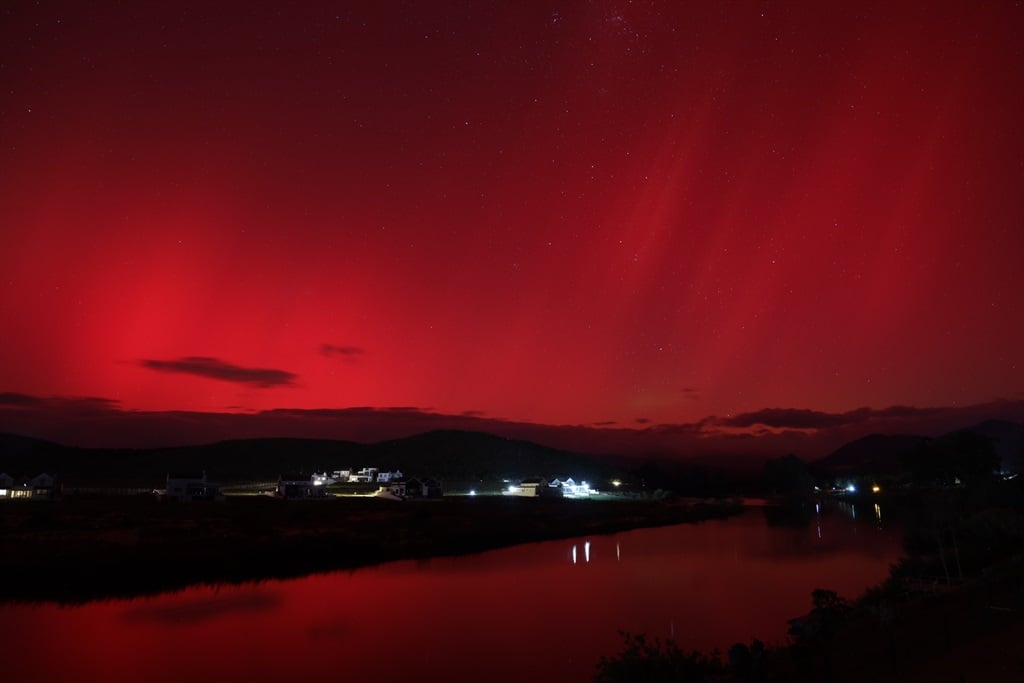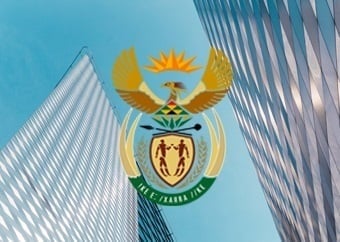SEE | Spectacular Southern Lights on display across SA - again
The Southern Lights from Robertson on 11 October. (Supplied/ Loreza Mostert).
- The Southern Lights were visible from South Africa in the early hours of Friday morning.
- This is the second time in a year that the aurora could be seen from SA, after a more than three-decade wait.
- A severe solar storm was responsible for the spectacular light display.
- For more financial news, go to the News24 Business front page.
The Aurora Australis, known as the Southern Lights, could be seen from across South Africa again in the early hours of Friday morning after a massive cloud of plasma spewed out from an active region of the sun and made contact with Earth.
Robertson resident and photographer Loreza Mostert told News24 that she set multiple alarm clocks so that she could attempt to capture the Southern lights for a second time this year.
Mostert also captured the aurora from her house beside the Breede River in May this year following the "Mother's Day" solar storm that made the Southern Lights visible from South Africa for the first time in over three decades.
She said that you couldn't miss the May storm, as the whole night sky went pink, but you had to know what you were looking for to see the aurora last night.
At a little after midnight last night, she got up, fiddled with her camera settings and took a long exposure shot from her house.

"It was spectacular. May was definitely more than this one, but it doesn’t matter. I hope more people saw it."
She said that you could faintly see a circle of pink light with the naked eye for around 45 minutes from around 00:20. In May, she said that the pink light was visible from around the same time and extended to 03:00 and beyond.

Mostert was not alone in seeing the Southern Lights.
Professor Alberto Castro-Tirado, a research professor at the Institute of Astrophysics of Andalucía (IAA) a part of the Spanish Research Council (CSIC) shared pictures of the aurora from an observatory Northeast of Bloemfontein.

He said that the aurora became visible from the BOOTES-6 astronomical station at the Boyden Observatory from around 01:15 South African time.
Widely seen
Many more people have taken to social media to report sightings of the aurora from South Africa.
The visual spectacle was created when a coronal mass ejection (CME), which is a cloud of plasma and magnetic fields, made contact with the Earth.
The incredible light displays are caused by collisions between the charged particles in the CME and different gases in Earth's atmosphere.
A CME is often created when the magnetic field lines of the sun cross and get twisted together, resulting in a massive explosion on the sun.
On Thursday morning, the South African National Space Agency (Sansa) page warned that a potential G4 "full halo" CME (solar storm) was due to hit Earth on Thursday evening, going into Friday morning.
READ | 'Full halo' solar storm to hit Earth tonight after explosion on the sun
A G4 is the second strongest category of CME with the severity ranging on a scale from G1 to G5.
On Friday morning, a Sansa spokesperson told News24 that each storm makes researchers better at forecasting space weather models.
"Aurora sightings are rare in South Africa and before the Mother’s Day storm in May this year, aurora was last spotted in SA in 1989. This means we do not have a big amount of historic data to work with. There is a big amount of variability when it comes to geomagnetic storm forecasts. However, with each new storm, researchers gather more data to improve space weather models," the spokesperson said.
The spokesperson confirmed that the storm last night did reach G4/Severe storm conditions.
During solar storms, the north and south poles of the Earth are impacted the most, as this is where Earth’s magnetic poles are. It is rare to see the Aurora in South Africa, as the country is far away from the South Pole.
While solar storms can create incredible aurora light displays like last night, they can also create blackouts in high-frequency radio communications, impact the trajectory and functioning of satellites and mess with high-voltage electrical equipment.
READ | Sunstill heading for peak after "extreme" solar storm last week, SA Space Agency warns
The sun moves through an 11-year activity cycle that will peak in July next year. That means that the chances of solar storms are currently elevated.
Sansa said that people can send their photos of aurora to spacesci-info@sansa.org.za and urged people who experienced interruptions in communications and navigation applications, to contact Sansa so it can investigate whether this was linked to the geomagnetic activity.
We live in a world where facts and fiction get blurred
Who we choose to trust can have a profound impact on our lives. Join thousands of devoted South Africans who look to News24 to bring them news they can trust every day. As we celebrate 25 years, become a News24 subscriber as we strive to keep you informed, inspired and empowered.
Related Links
Snow in spring is normal, and we're in for a long hot summer, says SAWS
'Full halo' solar storm to hit Earth tonight after explosion on the sun
Read more on:
sansasouth africaaurorasolar storm



